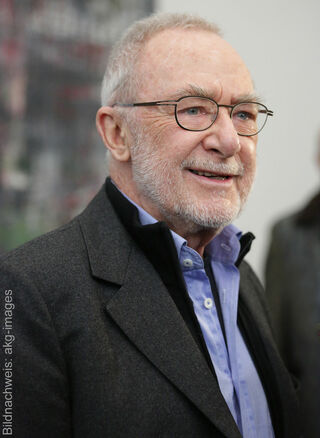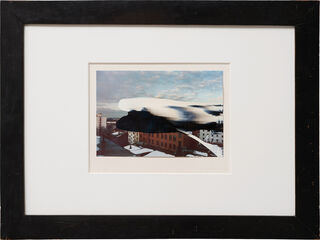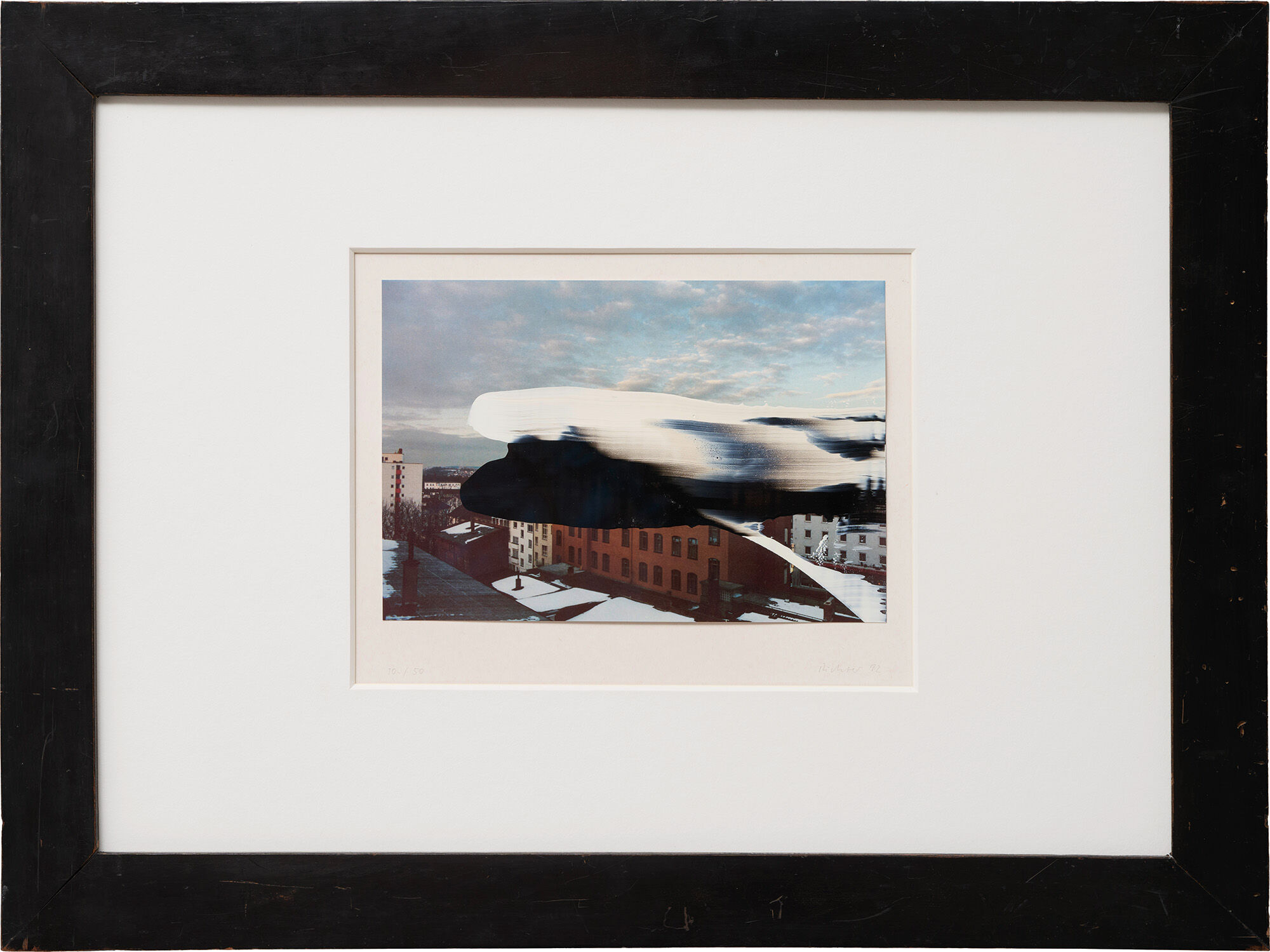Picture "Kassel" (1992) (Unique piece)


Picture "Kassel" (1992) (Unique piece)
Quick info
serial unique piece | numbered | signed | dated | mixed media on offset paper | framed | size 40 x 47.5 cm
Video
Detailed description
Picture "Kassel" (1992) (Unique piece)
Richter produced his small- or medium-sized overpaintings by dragging - usually at the end of a working day - the paint residues on the squeegees over the surface of photographs. This method connects the "photographic pictures" to his paintings in a very immediate and physical way.
The subjects of the overpainted photographs cover a similar range as the artist's paintings: mountain and lake landscapes, city views, self- and family portraits, and pictures of friends.
The works have an every day, if not idyllic, quality and revolve around the same cosmos of holiday memories, special private moments and records of a personal life that photography attempts to preserve.
Lacquer, white and black, on offset print coated with colourless, glossy nitro lacquer on offset paper, 1992. Mounted on cardboard. Serial unique piece in an edition of 50 copies, numbered, dated and signed by hand. Edition catalogue raisonné: 78. motif size/sheet size 15.9 x 23.5 cm. Size in frame 40 x 47.5 cm as shown.

About Gerhard Richter
Gerhard Richter has been in first place in the Art Compass year after year since 2004. Only once, in 2009, did Georg Baselitz - otherwise consistently in second place - displace Gerhard Richter from his top position.
And in 2023, Richter is once again in first place in the ranking of the world's most sought-after contemporary artists.
The Art Compass has been published in different magazines every fall since 1970, most recently in Capital magazine. It measures and evaluates solo exhibitions in internationally renowned museums and art institutes, participation in group exhibitions such as the Venice Biennale and reviews in renowned art magazines.
"I pursue no intentions, no system, no direction; I have no programm, no style, no mission." With these words, one of the most successful and versatile artists of our time describes himself - Gerhard Richter.
Born in Dresden, Germany, in 1932, Richter left his hometown two months before the building of the Berlin Wall in 1961 and went to West Germany to continue his studies at the Düsseldorf Art Academy. The young artist attracted attention with his photo-realistic paintings of motifs straight out of the family album. In a time and environment in which experimental, abstract art was predominant, Richter's paintings caused a sensation.
Richter's characteristic seems to be to look for new modes of expression whenever a method he explored has successfully established itself on the art market. His figurative painting in grey was followed by monochrome grey paintings and the coloured "Vermalung" (Inpainting) that made the pictorial motif unrecognisable. In the mid-1970s, he got involved in abstraction, no less successfully than with his previous works.
Versatility extends through Gerhard Richter's entire oeuvre. He is not "only" a painter, but also a sculptor and photographer, he draws, paints in watercolours, does performances and installations. His photographs and prints are now just as sought-after as his paintings, with high prices included. His paintings take up the room and are created with full physical effort.
His fame and the high prices are sometimes scary for the artist himself, as he freely admitted in an interview with Die Zeit in 2015. However, this does not detract from the popularity of his works. Richter is an artist who, despite his outstanding status, has remained true to himself and prefers to let his art speak instead of stage-managing himself.
In 2011, his oil painting "Kerze" (Candle) from 1982 sold for almost 12 million euros at Christie's London. The painting belongs to a series that Richter painted in the early 1980s in his slightly blurred, photorealistic style. It is considered a symbol of East Germany (GDR) citizens' silent protest against the socialist regime and became one of Richter's most famous motifs.
The most important private collector of Gerhard Richter is the British musician Eric Clapton, who owns more than 50 works. And this even though Richter's works are the most expensive of any living artist on the art market. The canvas "Abstraktes Bild" (Abstract Picture) from 1986 was sold at Sotheby's for 41 million euros. And even some of Richter's graphic works are already being traded in the six-figure range.
Gerhard Richter was awarded the Praemium Imperiale, the Nobel Prize for the arts, in 1997 and, as special recognition, a comprehensive retrospective at the New York Museum of Modern Art in 2002. With 188 works, it was the largest ever dedicated to a living artist.
Graphic artwork in the making of which the artist combines at least two graphic techniques.
A one-of-a-kind or unique piece is a work of art that has been personally created by the artist. It exists only once due to the type of production (oil painting, watercolours, drawing, etc.).
In addition to the classic unique pieces, there exist the so-called "serial unique pieces". They present a series of works with the same colour, motif and technique, manually prepared by the same artist. The serial unique pieces are rooted in "serial art", a type of modern art, that aims to create an aesthetic effect through series, repetitions and variations of the same objects or themes or a system of constant and variable elements or principles.
In the history of arts, the starting point of this trend was the work "Les Meules" (1890/1891) by Claude Monet, in which for the first time a series was created that went beyond a mere group of works. The other artists, who addressed to the serial art, include Claude Monet, Piet Mondrian and above all Gerhard Richter.


